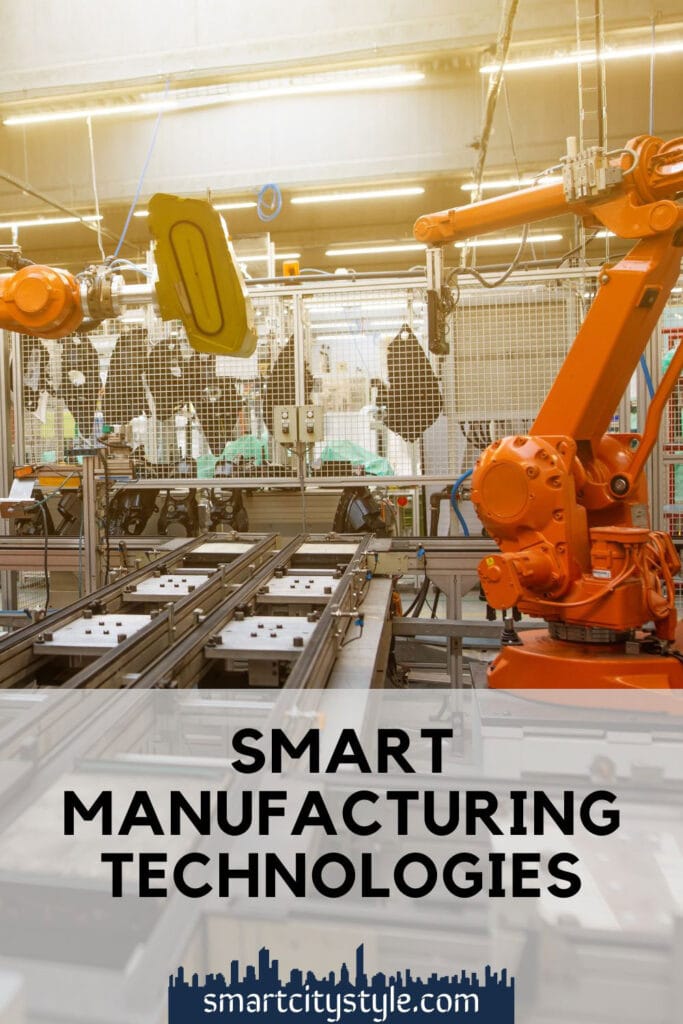Smart Manufacturing Technologies – Exploring the Impact on the Supply Chain and Beyond
Smart manufacturing technologies can facilitate responsible production and consumption. If appropriately managed, smart manufacturing technologies will ensure sustainable resources for future generations.
Pros and Cons of Smart Manufacturing on the Supply Chain
Smart manufacturing is designed to improve efficiency in the supply chain. Here are some ways through which smart manufacturing technologies impact the supply chain.
Pros:
- Improved efficiency: With the right systems in place, fewer mistakes can be made due to human error or delay, significantly improving efficiency within the supply chain.
- End-to-end transparency: Through smart manufacturing technologies, the entire supply chain can be networked from one end to the other. This ensures better transparency, which, in turn, can reduce lead times, increase plannability and highlight any potential system disruptions that could cause delays.
- Machine learning: Smart technologies often integrate machine learning processes in as many systems as possible. Machine learning all but guarantees better systems, better efficiency, and fewer breakdowns while freeing up the human resource to focus on other, more complex tasks. This improves the entire supply chain.
Cons:
- It’s expensive: The initial investments into building a smart supply chain can be astronomical.
- Maintenance fees: Since the entire chain depends on machines that tend to break down, too, the maintenance and upgrade fees can be crippling, especially when the company faces tough times, such as the recent COVID-19 pandemic.
Pillars of Smart Manufacturing
Let’s look at critical technologies that are the driving force behind Industry 4.0.

Cyber-Physical Systems (CPS)
These mechanical systems establish seamless connections between computer algorithms and physical components or hardware set to perform certain functions.
They are a collaboration of interconnected devices, including sensors and machines, that share a network and communicate with each other to perform physical tasks.
The sensor monitors conditions and transmits a signal to the computer, which controls an actuator that makes the physical device or machine perform the task. Your smart factory solution will hardly be complete without CPSs, as they are the backbone of automation.
The tasks are well-defined, as are the conditions under which they are performed. CPSs are pretty reliable as they are accurate and consistent. Production time is reduced, and so is the cost of labor. You will also get real-time updates on production and resource utilization.
Another benefit of this smart manufacturing technology is that accidents are mitigated because there are no human errors or distractions; the factory floor is generally safer.
The Internet of Things (IoT)
This holistic ecosystem of devices and machinery is connected through a wired or wireless network. It facilitates the transfer of data from one piece of equipment to another and the ability to give and receive instructions.
In smart factories, digital assistants, clocks, calculators, thermometers, and other electronics that are not traditionally computing devices have data processing, analytic functions, and internet connectivity. They also have sensors that enable them to collect data and can be programmed to respond in certain ways to the collected data.
Each industrial IoT device exploits the network for asset tracking, improving operational safety and reducing manual processes.
The data shows customer preference trends so that production can be focused and records production trends that you can use for predictive analysis. One application of this is estimating when the machines will likely break down and service them in advance, reducing downtimes.
Cloud Computing
This solution enables all devices connected to the internet to access relevant data files, software, and servers. It allows communication between different systems in the factory. Intelligence, software, and analytics are accessible on demand from computers, smartphones, and other devices with internet access from this centrally accessible location.
Cloud computing also simplifies scalability as setup costs are relatively low compared to on-premise solutions, and the hardware requirements are negligible. The option of only paying for what you utilize boosts many upcoming enterprises.
The ability to process big data at a central point gives a wholesome perspective of the manufacturing facility. Every decision made based on the data is beneficial to all business processes. Your digitized supply chain, sales, and distribution are seamlessly integrated with production and quality control.
Advanced Digital Simulation
Many industry 4.0 solutions have been developed using digital simulations of actual production processes to estimate the impact of suggested changes. The digital transformation enables the creation of virtual replicas of the factory setup, supply chains, specific processes, and projected scenarios.
It is structured around data gathered during the everyday running of the factory. The combination of data from IoT sensors connected to the devices, industrial control systems (ICSs) such as programmable logic controllers (PLCs), and enterprise systems like CRMs and ERPs, all connected to the internet, is sufficient to recreate a natural working environment.
This data is used to project the outcome of changes to the production process without affecting the actual product before the changes can be implemented. You can estimate service cycles at different production intensity levels so that you can schedule service or find alternatives to avoid downtime.
Estimate what you need to optimize capacity without wastage, improve workflow, or make the production process leaner to save resources without affecting output.

The most cutting-edge digital simulations today are digital twins. These are identical virtual production replicas. They apply machine learning and are instrumental in drawing conclusions and reasoning. Sensors measure different functional aspects of production for specific objects in the production cycle.
This can be output at different energy levels or weather conditions. The goals in these instances might be to optimize the simulated object’s performance or to improve production in harsh weather. The changes applied to the actual object only after the simulations seem successful.
Digital twins use real-time data to create their environment, giving them an edge over other simulations. The smallest are component twins that deal with specific parts. There are asset twins, which replicate many elements working simultaneously, system or unit twins showing how assets work together; and process twins, which mimic how the entire production system works.
Artificial Intelligence (AI) and Machine Learning
Smart factory machines are programmed to digest information and detect patterns that help decision-making, similar to how humans learn from experience. Automation enables the system to take full advantage of big data from multiple sources, some even external to the factory floor. They can make accurate calculations and draw inferences beyond the limitations of the human mind.
Based on previous track records, machine learning algorithms will enable estimation of the load the system can take before it breaks down or needs repair. They keep tabs beyond the human mind, and the inbuilt sensors will trigger an alert before you need to stop production.
This predictive analysis also enables predictive maintenance, meaning the factory will run seamlessly. It is also used to establish the exact input level needed to optimize production and predict the impact of any changes in the production process.
Edge Computing
Data is processed at the network’s periphery, right where the IoT sensors are, so that response is instant and any required action is taken immediately. This is necessary when production is real-time as some circumstances are safety issues that can’t wait for data to get to the cloud to get a response.
The bandwidth resource requirement for edge computing is also low. This allows the system to operate at full capacity, and your devices have higher chances of reaching each other when internet connectivity is spotty.
Integration to Existing Enterprise Systems
Production operation data from different sources like the ERP, supply chain management, and CRM systems can be compiled and analyzed centrally, facilitating wholesome decision-making. This creates new levels of visibility and opens up insights from the data that were challenging to capture when the systems were siloed.
The Impact of Smart Manufacturing Technologies on the Supply Chain
The fourth industrial revolution has many tools that make supply chain management proactive and effective. The centralization of activities has expanded transparency while reducing operational costs.
Thanks to advanced technology, the entire process is more flexible and easier to manage. All stakeholders should embrace the digital transformation of manufacturing as it is the way of the future.
Inspired? Pin it!







